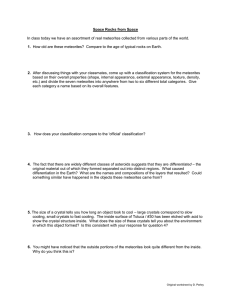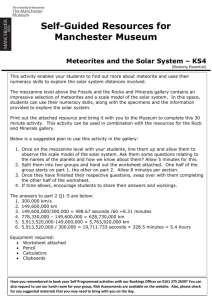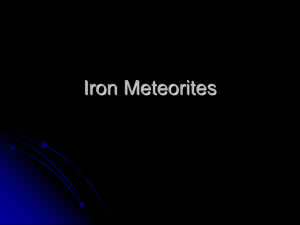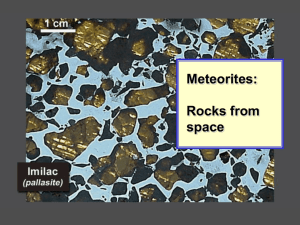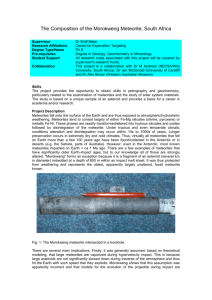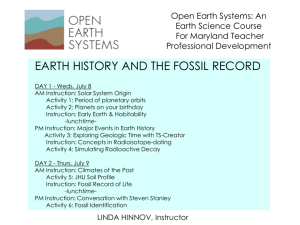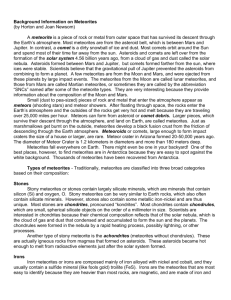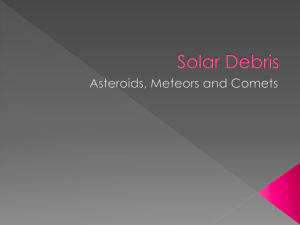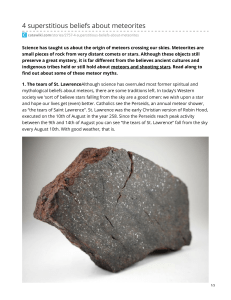Notes as
advertisement
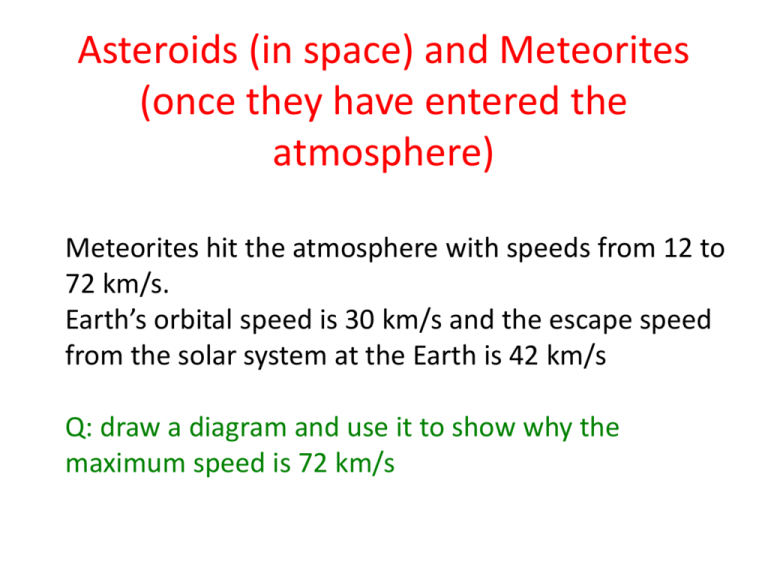
Asteroids (in space) and Meteorites (once they have entered the atmosphere) Meteorites hit the atmosphere with speeds from 12 to 72 km/s. Earth’s orbital speed is 30 km/s and the escape speed from the solar system at the Earth is 42 km/s Q: draw a diagram and use it to show why the maximum speed is 72 km/s Only asteroids which are large enough will survive burn-up in the Earth’s atmosphere and land as meteorites Types: • Irons • Stones (light silicates, like Earth’s crust) • Stony Irons (show small stony bits set in Fe) Iron meteorites can show large crystalline patterns: Widmanstatten patterns In order to form these large crystals, the metal has to cool extremely slowly: 1 degree per million years Metal would cool much more quickly in space; it must have been protected by a large body of 10 km or more in diameter Differentiation Asteroid forms, is homogeneous Heated by radioactive decay, melts Dense material falls to the center (cf Earth’s core) Since the short-lived radionuclides are long gone, this suggests that these asteroids were formed in the early solar system Age-dating of meteorites supports this: all very old (4-5 billion years) Meteorites are samples of the early solar system Some meteorites actually came from the Moon or Mars Q: how did they make their way to Earth? Photomicrographs of thin sections of Moon rocks Age-dating rocks What do we mean by the age of the rock? Generally, time rock has existed without being chemically disturbed Stony meteorites are chemically heterogeneous Sr isotope ratio: daughter(87)/stab le (86) isotope Parent / stable isotope of Sr 87Rb/87Sr isochron for the Tieschlitz H3 chondrite meteorite

